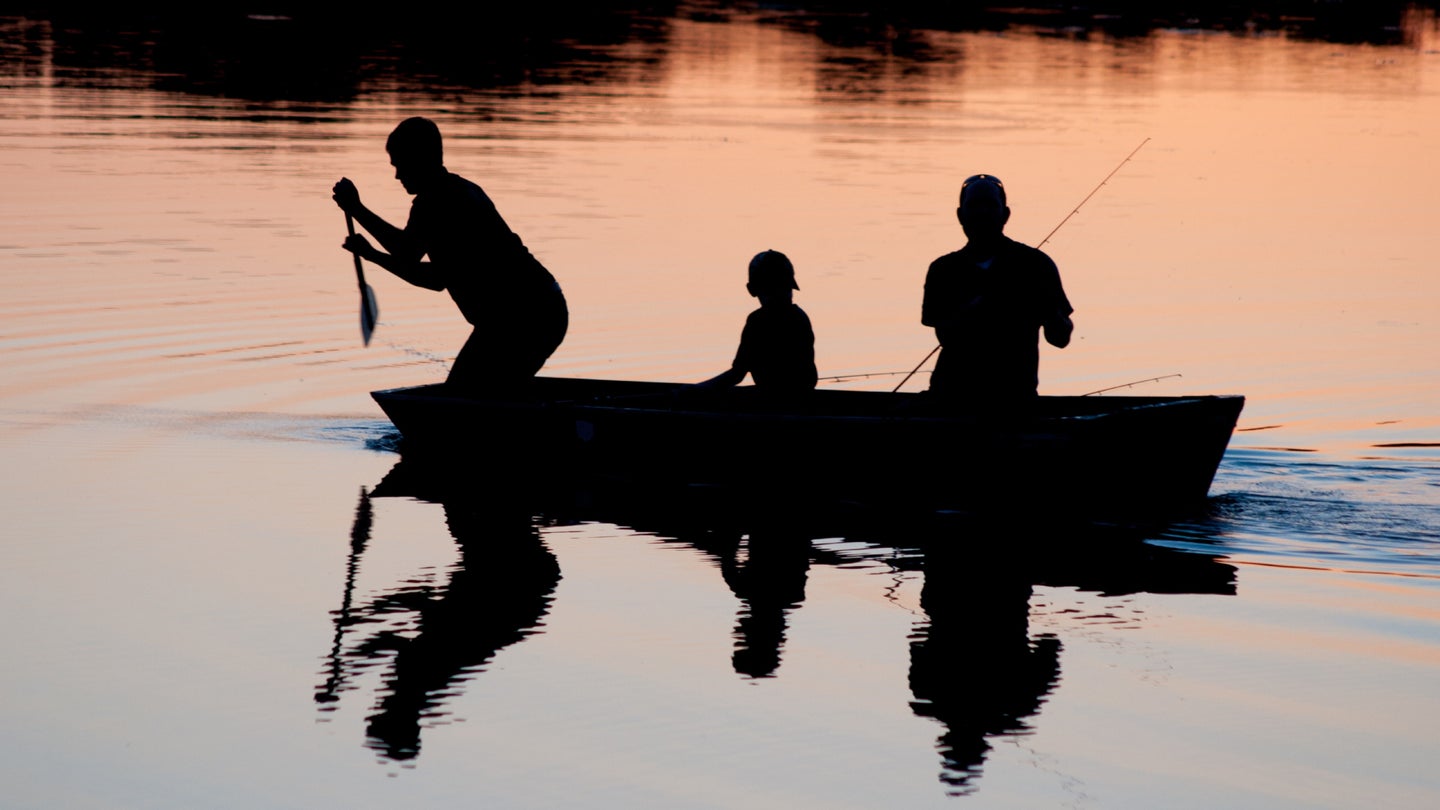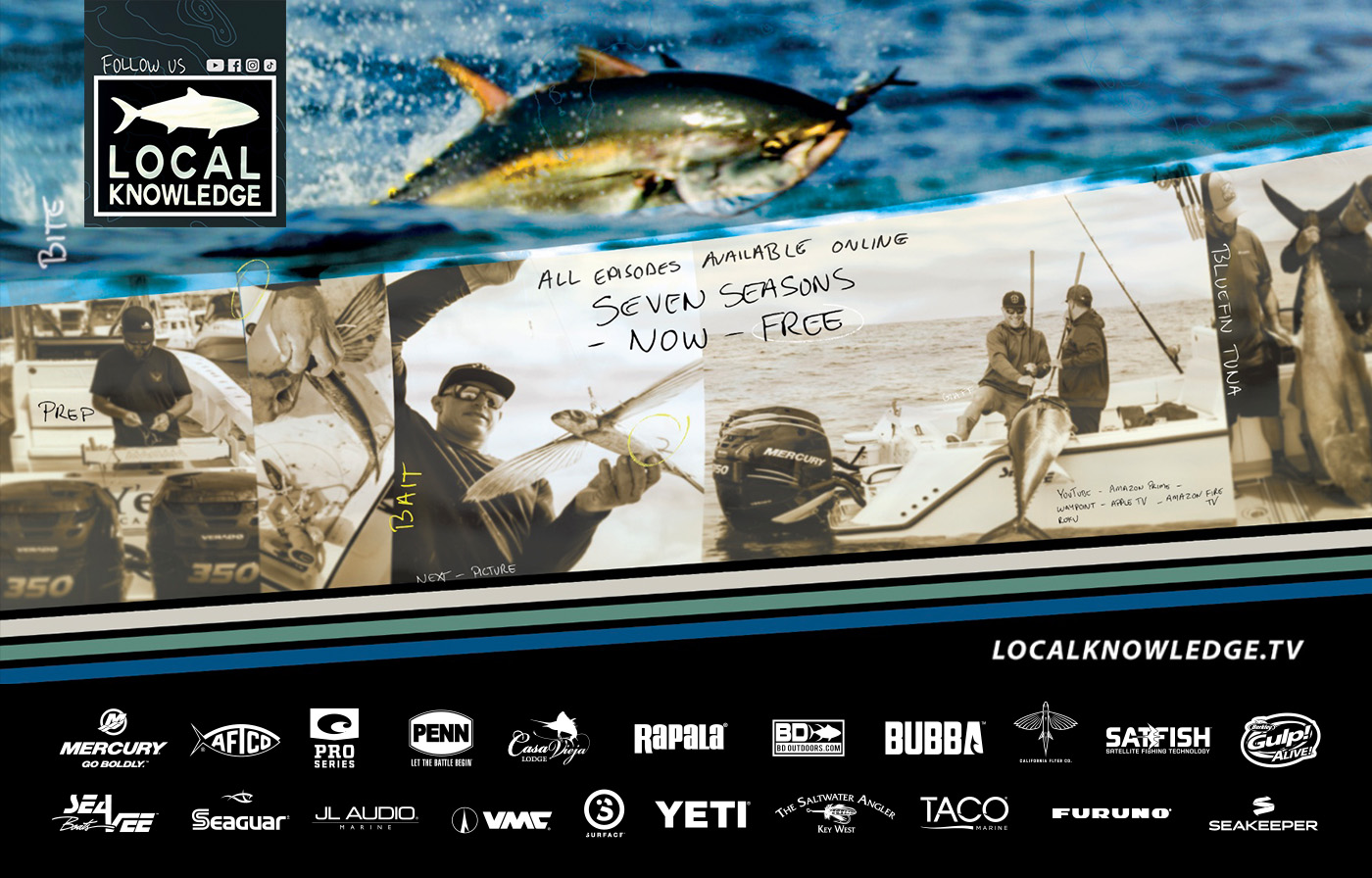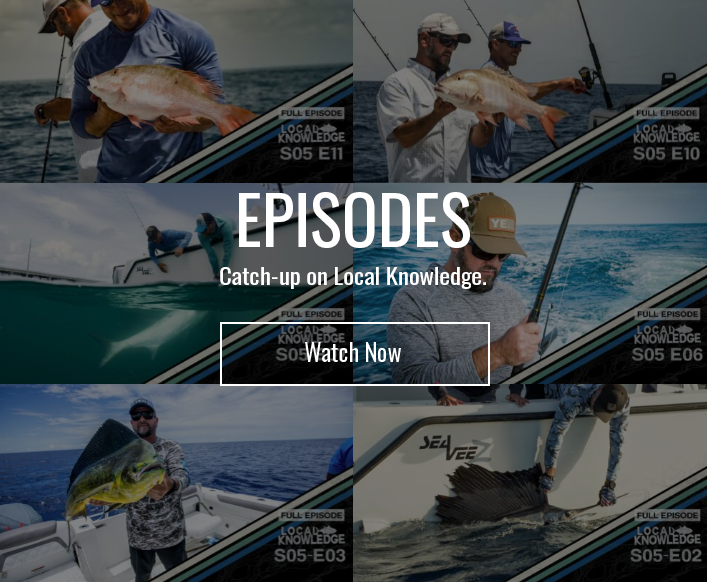Best Links for Fishing So Cal.
Wednesday, April 19, 2023
Wednesday, February 22, 2023
Local Knowledge - Fishing Show - BD Outdoors Season 7
| Local Knowledge You Tube |
||||||||||||||||||||||
|
||||||||||||||||||||||
|
Monday, October 3, 2022
Illegal fishing fleets generate $10 billion in annual sales
Ian Urbina, The Outlaw Ocean Project
Ian Urbina, a former investigative reporter for the New York Times, is the director of The Outlaw Ocean Project, a non-profit journalism organization based in Washington, D.C., that focuses on reporting about environmental and human rights crimes at sea."
Illegal fishing fleets generate $10 billion in annual sales
If you look at the taxonomy of crime that plays out offshore, it’s both diverse and acute. And yet illegal fishing sits at the top of that hierarchy. It’s a global business estimated at $10 billion in annual sales, and one that is thriving, as improved technology has enabled fishing vessels to plunder the oceans with greater efficiency.
The Thunder flourished in this context. Interpol had issued a Purple Notice on the ship, the equivalent of adding it to a most wanted list, a designation given to only four other ships in the world up to that time. The vessel had collected over $76 million from the illicit sales of seafood in the past decade, more than any other ship, according to Interpol estimates.
Listen and subscribe to "The Outlaw Ocean" podcast.
Banned since 2006 from fishing in the Antarctic, the Thunder had been spotted there repeatedly in the years that followed. In 2015, that’s where the environmental organization Sea Shepherd found it. Speaking through a translator, Peter Hammarstedt, captain of the Bob Barker, warned that the Thunder was banned from fishing in those waters and would be stopped.
It was the beginning of an extraordinary chase and the subject of the second episode of “The Outlaw Ocean” podcast, from CBC Podcasts and the L.A. Times. Listen to it here:
For 110 days and more than 10,000 nautical miles spanning two seas and three oceans, the Bob Barker and a companion ship, both operated by Sea Shepherd, trailed behind the trawler, with the three captains close enough to watch one another’s cigarette breaks and on-deck workout routines. In an epic game of cat-and-mouse, the ships maneuvered through an obstacle course of giant ice floes, endured a cyclone-like storm, faced clashes between opposing crews and nearly collided in what became the longest pursuit of an illegal fishing vessel in history.
As chronicled by the Outlaw Ocean Project, a nonprofit journalism organization whose reporter was on board the Bob Barker, the chase ended with a distress call from the Thunder. “We’re sinking,” the Thunder’s captain pleaded over the radio. The ships operated by Sea Shepherd rescued the crew and tried gathering evidence of its crimes before the ship sank to the bottom of the ocean.
Friday, September 2, 2022
Great BlueFin Nigiri Recipe - BloodyDecks

San Diego has become a world renowned fishing destination for Bluefin
over the past 10 years. As a centennial event, Bluefin migrations
shifted around 2015, bringing a bulk of the Pacific biomass within day
range of the California coast during the summer months. San Diego has
been the epicenter of West Coast Bluefin fishing with fish being caught
exceeding 300lbs. Amazing topwater displays have become common with
massive foam spots of tuna attracting jig oriented anglers from all
over. With such large fish being caught, a common concern is ensuring
all the fish gets eaten. People are amazed at the amount of tuna loin
they leave with following a successful tuna trip. It is no secret that
Bluefin taste delicious. They are rich in flavor, buttery when served
raw, and amazing seared.

Ingredients
4 - Infinity- Bluefin or Yellowfin Tuna Loin
- Instant Sticky Rice (Tamaki Gold Recommended)
- Jalapeño
- Avocado
- Spicy Chili Crisp
- Avocado
- Cilantro
- Soy Sauce
- Lemon
- Water
Preparation
- Pat Tuna dry of all excess moisture.
- Slice Tuna 1/4 inch thick and trim to 1 inch long.
- Cook instant sticky rice according to package instructions.
- Let rice cool.
- Slice lemons and jalapeños.
- Dice avocado and cilantro.
- Mix 2 tbsp soy sauce with I tsp water in a bowl.
- Squeeze one lemon slice into soy/water mix.
- Take rice and mold into 1 1/2 inch long beds of rice.
- Place sliced tuna on beds of rice.
- Place jalepeno slice on one end of the tuna.
- Squeeze desired amount of Hoisin sauce into Jalapeño slice.
- Place desired amount of diced avocado on tuna.
- Dollop Spicy Chili Crisp on top.
- Spinkle panko breadcrumbs.
- Garnish with chopped cilantro.
- Lastly spoon soy mix lightly over each bowl and allow remaining to settle at the base of the plate or bowl.
- Enjoy and impress everyone!
Monday, May 23, 2022
Monday, May 16, 2022
A casual angler’s guide to taking kids fishing for the first time Keep it fun, safe, and simple. By Jean Levasseur | Published May 12, 2022 8:00 AM
https://www.popsci.com/diy/prepare-kids-first-fishing-trip/
A casual angler’s guide to taking kids fishing for the first time Keep it fun, safe, and simple.
By Jean Levasseur
Published May 12, 2022 8:00 AM - Popular Science
If you’re not an avid angler yourself, but want to get the family involved in the sport, you’ll need to make sure it’s fun for them. That means catching fish—lots of fish. Kids just starting out would much rather catch 40 little sunfish than the biggest bass in the lake like you or I would. Fishing with children is all about quantity over quality, and there are several ways to increase your chances of having a big day.
Do your research in advance
The odds of just showing up to a lake, casting out from shore, and catching fish are not very good. Before taking your kids out for their first trip, spend some time together learning about fishing in your area. “Studying fishing is a huge learning opportunity,” says Brian Kearning, former fishing boat mate, fishing guide, and founder of BoatEasy, a website that serves recreational boaters. Even if your kids ultimately gravitate away from the sport, fishing-related research touches so many areas of science. Learning about the feeding habits and behaviors of specific fish teaches lessons in biology and the food chain. Knowing where fish might be hiding helps to understand how ecosystems work. And every angler always keeps a close eye on weather patterns, both to understand how they will affect the fish and to stay safe and dry.

Tuesday, April 26, 2022
Massive 832-Pound Bluefin Tuna Breaks Florida Fishing Record But Misses Record Book Due To Technicality
A group of fishermen in Destin, Florida just landed one of the largest fish ever caught in the state of Florida. The 832-pound Bluefin Tuna would easily be a Florida state fishing record if it wasn’t for a technicality. Regardless of the technicality, it’s still one of the largest fish ever caught in the Sunshine State and the pictures of this bluefin tuna are out of this world.
In order for a fishing record to be certified it needs to have been caught by one fisherman. The vast majority of recreational and serious anglers on the planet know this. It’s just part of the game. The same is true for Big Game fishing tournaments where there are typically designated anglers.
The reason this 832-pound Bluefin Tuna caught in Destin isn’t a new state fishing record is because the listed angler is “whole team”, meaning that everyone on the boat took turns fighting the fish. There’s absolutely nothing wrong with that. I cannot tell you the number of times in my life that we’ve passed the rod around when fighting big fish. But it does mean this fish cannot be certified as a new fishing record despite breaking the previous record by several pounds.
832-Pound Bluefin Tuna Misses Florida Fishing Record On Technicality
Devin Sarver posted photos of the record-worthy Bluefin Tuna on Facebook. It tipped the scales at a whopping 832.2 pounds and it took fiver anglers 4.5 hours to reel in this absolute beast of a fish!
More Details On This Near-Record Tuna
According to the board in the images and the caption on Facebook, the boat they were fishing on was named ‘Noname’ which is a perfectly cromulent name for a fishing boat. It took five fishermen 4.5 hours to reel it in before they brought it back to the Harbor Walk Marina where they weighed the fish on April 17, 2022.
Fishing for Bluefin Tuna in Florida is a gamble. There’s no guarantee you are going to catch one of these as it’s a pretty rare species in the Sunshine State. However, should you catch one there are some rules in place. Any Bluefin Tuna caught in Florida is supposed to be reported to NOAA within 24 hours of being caught. Furthermore, anyone fishing for Bluefin Tuna must have a HMS Angling Permit and that’s not just to keep the fish, if you’re out there targeting this species you still need that permit onboard the boat. Those permits are only $26 but you must apply for them on the NOAA website and it can take about 2 weeks to process.
How Does This Bluefin Tuna Compare To Other Fishing Records?
Bluefin Tuna is one of the biggest species of fish on the entire planet. IGFA keeps all fishing world records and they don’t separate Bluefin into Atlantic and Pacific like some subspecies of tuna. The IGFA all-tackle fishing world record for Bluefin Tuna is an unfathomably large 1,496-pound fish that was caught in Aulds Cove, Nova Scotia, Canada back in 1979.
The existing state fishing record in Florida for Bluefin Tuna is an 826.5-pound fish caught by angler Rick Whitley. According to For The Win, Whitley was also fishing out of Destin, Florida and that fish was caught back on May 8, 2017. Staying in the Gulf of Mexico but over in Texas, the Lonestar State record for Bluefin is 876-pounds and that record was actually broken last Summer.
But every serious tuna angler knows it’s the North Atlantic that yields the biggest bluefin tuna on the planet. If your goal is to catch one of these fish weighing over 1,000-pounds you’ll want to start in Cape Cod and head north from there to give yourself the best shot at a grander tuna.
Friday, February 11, 2022
4 Fishing Etiquette Tips
4 Fishing Etiquette Tips
 https://thefishingwire.com/4-fishing-etiquette-tips/
https://thefishingwire.com/4-fishing-etiquette-tips/One of the biggest pet peeves for many freshwater anglers is when they are having a good day fishing from a boat in a quiet spot on the lake or river and another angler comes along, pulls up right beside them and starts casting in the same area without asking first.
“It happens pretty much on a daily basis,” said Mercury Pro Team member Michael Neal.
If it’s a public body water, everyone is welcome to use the resource, of course. In most places, there are no written rules about how far you need to stay away from other boats and anglers. It’s within your rights to fish next to someone, as long as you aren’t harassing them (intentional angler harassment is against the law in many states). It’s up to each individual angler to decide what’s responsible behavior in terms of how much distance to put between your boat and theirs. Practicing good fishing etiquette means treating other anglers and boaters on the water with respect and giving them their space.
Neal, who fishes the Major League Fishing Bass Pro Tour and Pro Circuit, said it all comes down to following the Golden Rule. “Treat others the way you want to be treated,” he said.
“Communication is key. It’s the number one thing that makes your day on the water go smoothly,” added Mercury Pro Team member and Bassmaster Elite Series angler John Crews.
Here are four fishing etiquette tips from these two pros to help keep it friendly and fun for everyone on the water. What’s outlined here are unwritten rules that guide tournament anglers and serious recreational anglers.
- A “bent pole pattern,” indicating that an angler has a fish on the line, is not an invitation to take your boat to that angler’s position and start fishing right next to them. It’s probably better to go somewhere else, but if it’s a spot you had already hoped to fish, just wait it out. “My advice is to wait until they leave to go over to that spot,” said Neal.
- When another angler is fishing in a spot near where you would like to fish, stop your boat within hailing distance and let the person know your wishes. For example, if an angler is fishing partway back in a creek, and you want to fish all the way in the back, ask first if he or she intends to head deeper into the creek before you go there yourself. “If I go into an area where someone else is fishing, I ask them if they are going to continue, and if it’s OK for me to fish there. If they are having a bad day and they want to be rude about it, you don’t want to be fishing around them anyway,” Crews said. On crowded lakes, you’re likely to wind up fishing near someone. In that case, keep a respectful distance. “We usually have a mutual understanding: ‘Don’t get any closer to me, and I won’t get any closer to you,’” Neal said, referring to his fellow tournament anglers.
- Don’t pass too close to another angler’s boat. “Stay away from the side where their rods are; pass on the other side if you can,” Crews said, adding that it’s important to give other boats with active anglers a wide berth when you pass, if there’s room. “Two hundred to 300 feet is ideal; 100 feet at a minimum. Pass at speed and make a minimal wake rather than slowing down and pulling a big wake. However, if there isn’t room to pass far enough away, come off plane well before you get near the other boat and idle past.”
- Never, ever cross lines with another angler. “The number one no-no is to cast across somebody else’s line. I’ve had it happen to me personally. I decided to leave the spot to him. I figured, if it’s important enough for him to do that, he can have it,” Neal said.
Use common courtesy, and there should be enough space for everyone to fish in harmony. When in doubt, err on the side of being as respectful as possible.
“Most anglers are super cool, and as long as you can communicate with them, you can make it work,” Crews concluded.
Sunday, August 9, 2009
Welcome to the latest Blog from OneCoolTuna.com
This site is for Anglers who love to fish. We will be posting stories and news about the fishing world. As well as product news and issues about fishing from around the world.
This is a Global site on fishing.. I hope you enjoy it..







